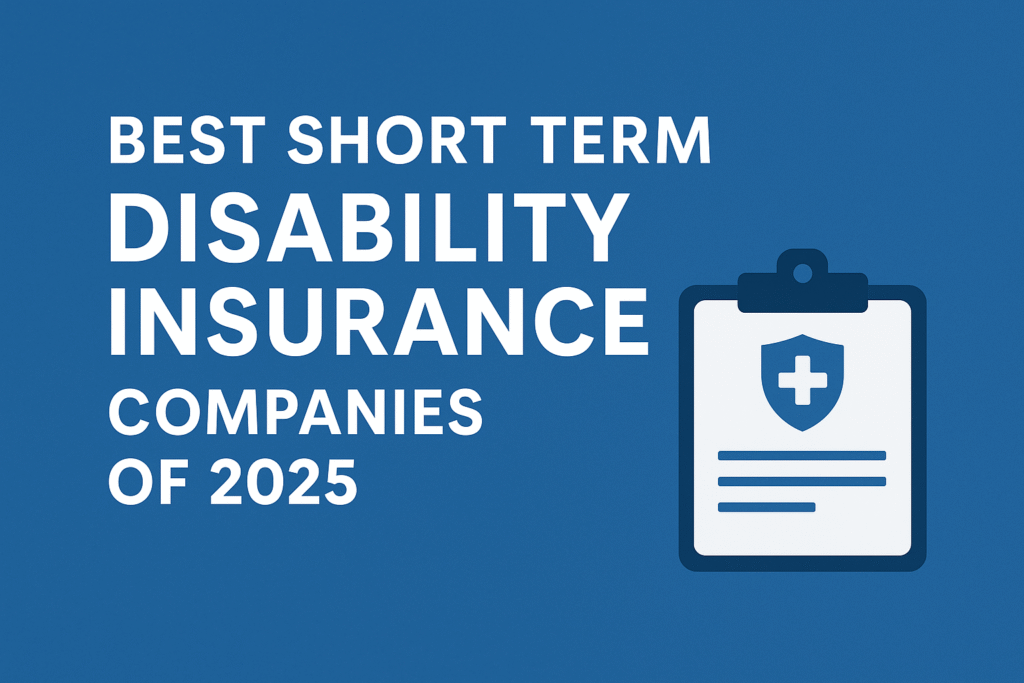Your accumulated annual leave represents more than just time off—it’s a valuable financial benefit that requires strategic planning to maximize its worth. Understanding the USPS maximum annual leave carry over rules can mean the difference between losing hundreds of hours of earned time and securing significant financial value for your future.
Recent changes to USPS policies have increased the maximum carryover for many employees from 440 hours to 520 hours of accumulated annual leave, providing greater flexibility for career employees across the postal service. However, navigating these complex rules requires understanding which limits apply to your specific position and how to avoid the dreaded “use or lose” scenario.
This comprehensive guide covers everything you need to know about annual leave carryover limits, exchange options, employee rights, and strategies for protecting your financial security through smart leave management.
Understanding USPS Annual Leave Carryover Limits
Annual leave carryover refers to the maximum amount of earned annual leave that employees can transfer from one leave year to the next without forfeiture. The carryover limit serves as a ceiling—any accumulated leave beyond this threshold is lost unless specific circumstances apply, such as retirement or participation in the annual leave exchange program.
For leave year 2025, which runs from January 11, 2025, to January 9, 2026, most regular work force employees benefit from a temporary increase to 520 hours of accumulated annual leave carryover. This represents a significant improvement from the traditional 440 hours limit that applied for years under the national agreement.

The carryover limit exists to encourage employees to use their earned annual leave for rest, recreation, and personal matters while preventing excessive accumulation that could create operational challenges. However, recent memoranda of understanding (MOU) between USPS and major unions recognize that operational demands sometimes prevent employees from using leave as planned.
These temporary increases acknowledge the reality that many postal workers face difficulty scheduling time off due to staffing constraints and operational requirements. The higher ceiling provides a buffer that protects employees from losing earned benefits while they work to balance their leave usage with service demands.
Current Carryover Limits by Employee Category
Understanding which carryover limit applies to your position is crucial for effective leave planning. The postal service maintains different limits based on employee classification and bargaining unit status.
| Employee Category | Maximum Carryover | Effective Period | Source |
|---|---|---|---|
| Bargaining Unit (NALC, APWU, NPMHU) | 520 hours | Leave Years 2024-2026 | Recent MOU |
| EAS Employees | 640 hours | Leave Year 2024 onward | Permanent policy |
| Non-Career Employees | Varies by agreement | Check specific contract | Local policies |
Career employees represented by major unions including the National Association of Letter Carriers (NALC), American Postal Workers Union (APWU), and National Postal Mail Handlers Union (NPMHU) can carry 520 hours of accumulated annual leave into the next leave year under current agreements. This temporary increase from the standard 440 hours continues through leave year 2026, though future extensions will depend on labor-management negotiations.
EAS employees—those in Executive and Administrative Schedule positions—enjoy a permanent increase to 640 hours maximum carryover beginning with leave year 2024. This higher ceiling recognizes the unique scheduling challenges faced by supervisors and managers who often find it difficult to take extended time off due to operational responsibilities.
The distinction between temporary and permanent increases is important for long-term planning. While bargaining unit employees currently enjoy the higher 520-hour ceiling, this benefit expires after leave year 2026 unless renewed through future memoranda of understanding. EAS employees, however, can plan around the permanent 640-hour limit for their career planning and retirement strategies.
How Annual Leave Carryover Works in Practice
The annual leave carryover process occurs automatically at the beginning of the leave year, typically in early January. Understanding this timeline helps you avoid losing valuable earned time and plan your leave usage strategically throughout the year.
At the end of each leave year, USPS payroll systems calculate your total number of accumulated annual leave hours. If your balance exceeds the maximum carryover limit for your employee category, any excess hours are forfeited unless you participate in the annual leave exchange program or qualify for special circumstances like retirement.

Here’s how the carryover process works step by step:
Step 1: Balance Calculation – During the final pay period of the leave year, your accumulated annual leave balance is reviewed against your maximum carryover limit.
Step 2: Excess Determination – Any hours above your ceiling (520 hours for most bargaining unit employees, 640 hours for EAS employees) are identified as potentially forfeit.
Step 3: Exchange Consideration – If you’ve requested participation in the annual leave exchange, eligible excess hours are sold back rather than lost.
Step 4: Final Carryover – Remaining hours up to your limit carry forward to the new leave year, while any excess not exchanged is forfeited.
The “use or lose” scenario occurs when employees accumulate more leave than they can carry over without participating in exchange programs. This typically happens when operational demands prevent adequate leave usage or when employees save leave for major life events without proper planning.
To track your accumulated annual leave throughout the year, review your regular earning statements and monitor your balance on the Employee PostalEASE system. Most employees should aim to maintain balances below their carryover ceiling by the final pay period to avoid any risk of forfeiture.
Annual Leave Exchange Options and Selling Back Leave
The annual leave exchange program provides a valuable safety net for employees who find themselves approaching or exceeding their carryover limit. Understanding the eligibility criteria and application process can help you convert excess leave into immediate financial benefit rather than losing it entirely.
For leave years 2025 and 2026, eligible bargaining unit employees can sell back up to 80 hours of annual leave through the exchange program—double the traditional 40-hour limit. This increase recognizes the challenges many employees face in using leave due to operational requirements and provides additional flexibility for managing accumulated balances.
Eligibility Requirements for Annual Leave Exchange:
To qualify for the leave exchange program, you must meet several criteria that demonstrate responsible leave management:
- Maintain a minimum balance of 440 hours of accumulated annual leave after the exchange
- Use fewer than 64 hours of sick leave during the leave year (with exceptions for serious health conditions)
- Submit your exchange request by the specified deadline, typically several weeks before the end of the leave year
- Be a career employee in good standing with no disciplinary actions affecting leave usage
The financial benefits of participating in the exchange program are significant. Rather than losing excess hours to forfeiture, you receive payment equivalent to your regular hourly rate for exchanged leave. For example, if you earn $25 per hour and exchange 80 hours of annual leave, you receive $2,000 in additional income while still maintaining a substantial leave balance.
The exchange process requires advance planning and careful attention to deadlines. USPS typically provides notification about exchange opportunities several months before the end of each leave year, allowing employees time to calculate their projected balances and make informed decisions about participation.
Remember that exchanged leave cannot be recovered—once sold back, those hours are permanently removed from your balance. Consider your future leave needs, planned vacations, and potential emergency situations before deciding how many hours to exchange.
Employee Rights and Management Responsibilities
Understanding your rights regarding annual leave usage and management’s obligations helps ensure you can access your earned benefits when needed. The postal service operates under specific rules that protect employee leave rights while balancing operational requirements.
Your Rights to Annual Leave:
Every USPS employee has fundamental rights to their earned annual leave that management must respect:
- Request annual leave for any reason – You don’t need to provide detailed justification for leave requests, whether for vacation, personal business, or family matters
- Receive timely responses – Management must approve or deny leave requests within three business days of submission using PS Form 3971
- Appeal unreasonable denials – When leave is denied for insufficient operational reasons, you have recourse through your union representative and grievance procedures
- Protection from retaliation – Management cannot take disciplinary action against employees for requesting or using earned annual leave
Management Responsibilities:
Supervisors and managers have specific obligations regarding leave administration that protect your rights:
Management must make good-faith efforts to accommodate leave requests and cannot deny time off simply because it’s inconvenient. While operational needs may sometimes require denying specific dates, managers should work with employees to find alternative arrangements that meet both personal and service requirements.

When leave requests are denied, management must provide clear, specific reasons related to operational necessity. Vague explanations or blanket denials that don’t consider alternatives may violate your rights and can be challenged through union representation.
Resources for Leave Issues:
If you encounter problems with leave approvals or feel your rights are being violated, several resources can provide assistance:
- Union Representatives – Your local union steward can help interpret contract language and file grievances when necessary
- District Human Resources – HR personnel can clarify policies and mediate disputes between employees and supervisors
- Employee Assistance Programs – These services can help with work-life balance issues that may be contributing to leave problems
- Postal Service Contact Centers – Official channels for reporting management failures to follow proper leave procedures
Don’t hesitate to seek help when facing unreasonable leave restrictions. Your earned annual leave is a valuable benefit that you have every right to use for maintaining your health, spending time with family, and managing personal affairs.
Protecting Your Financial Security Through Smart Leave Management
Effective annual leave planning serves multiple purposes beyond simple vacation scheduling—it’s a crucial component of your overall financial wellness and career longevity. Understanding how to strategically manage your accumulated leave can significantly impact your work-life balance, mental health, and long-term financial security.
Strategic Leave Planning for Maximum Benefit:
Smart leave management requires balancing current needs with future opportunities while staying well below your carryover ceiling. Consider these approaches for optimizing your annual leave usage:
Build in Regular Recovery Time – Schedule consistent short breaks throughout the year rather than banking all leave for major vacations. Regular time off helps prevent burnout and maintains productivity while ensuring steady leave usage that prevents excessive accumulation.
Plan for Life Events – Major occasions like weddings, graduations, or family emergencies often require significant time off. Plan these events well in advance and communicate with management early to secure necessary dates while maintaining your leave balance below dangerous levels.
Consider Terminal Leave Value – If you’re planning retirement within the next few years, remember that unused annual leave converts to a lump-sum payment. However, don’t sacrifice current well-being for future payout—the mental and physical benefits of regular time off often outweigh the financial advantage of maximum accumulation.
Connection Between Leave and Overall Financial Health:
Your ability to take earned time off directly impacts your long-term earning capacity and career sustainability. Employees who regularly use leave for rest and personal matters typically experience:
- Lower rates of stress-related health problems that could impact work performance
- Better family relationships that provide emotional support during challenging periods
- Reduced risk of burnout leading to poor decision-making or disciplinary issues
- Maintained perspective that helps navigate workplace challenges effectively
However, even the most comprehensive leave benefits cannot protect against every financial threat postal employees face. Unexpected health issues, family emergencies, or workplace injuries can quickly exhaust your accumulated annual leave and sick leave, leaving you without income protection during critical periods.

Recognizing the Limits of Leave Benefits:
While USPS provides generous leave benefits compared to many employers, these benefits have important limitations that every employee should understand:
Annual leave and sick leave are finite resources that can be depleted during extended absences. A serious injury or illness requiring months of recovery could easily exhaust years of accumulated leave, leaving you without income replacement when you need it most.
Additionally, leave benefits only protect your income if you remain employed. If a medical condition prevents you from returning to work, your leave benefits end, but your financial obligations continue. This gap in protection represents a significant vulnerability that many postal employees don’t fully appreciate until they face a crisis.
Secure Your Income When Leave Isn’t Enough
While understanding your usps maximum annual leave carry over benefits is essential for short-term financial planning, protecting your long-term income requires additional safeguards that go beyond what the postal service provides. Even employees with maximum carryover balances can find themselves financially vulnerable when serious health issues extend beyond their accumulated leave.
The reality is that your annual leave hours, while valuable, represent only a fraction of your total career earnings. A disability that prevents you from working for an extended period could result in losing hundreds of thousands of dollars in lifetime income—far more than even the maximum 520 hours of accumulated annual leave could replace.
Why USPS Employees Need Additional Protection:
Postal work involves physical demands that increase injury risk compared to many other careers. Letter carriers face daily exposure to weather extremes, heavy lifting, and repetitive motions. Mail processing employees work with machinery and handle thousands of packages daily. Even EAS employees face high-stress environments that can contribute to health problems.
The Federal Employees’ Compensation Act (FECA) provides some protection for work-related injuries, but coverage gaps exist for conditions that develop gradually or result from non-work activities. Meanwhile, Social Security Disability benefits require extensive waiting periods and strict qualification criteria that leave many workers without adequate protection.
How Disability Insurance Complements Your Leave Benefits:
Short-term disability coverage works alongside your annual leave carryover to provide comprehensive income protection during health crises. While your accumulated leave covers the initial weeks or months of an absence, disability benefits can continue providing income replacement for extended periods when medical conditions prevent your return to work.
This layered approach to income protection ensures that a serious health issue doesn’t derail your family’s financial security. You can use your earned annual leave for the immediate recovery period while disability benefits provide ongoing support if your condition requires extended time away from work.
For postal employees who have worked hard to build substantial leave balances, disability insurance represents the logical next step in comprehensive financial planning. Just as you’ve been strategic about managing your carryover for leave year planning, protecting your income through disability coverage demonstrates the same forward-thinking approach to your family’s financial security.
Take Action to Protect Your Income Today:
Don’t wait until you’re facing a health crisis to consider your income protection options. The Postal Life and Disability Program specializes in providing comprehensive disability coverage designed specifically for USPS employees’ unique needs and risk factors.
We understand the physical demands of postal work and the financial pressures facing postal families. Our short-term disability coverage can bridge the gap between your annual leave benefits and long-term financial security, ensuring that your family maintains financial stability regardless of what health challenges you may face.
Request your personalized disability insurance quote today. Our specialists can review your current leave benefits, assess your individual risk factors, and design coverage that complements your existing USPS benefits for complete income protection.
Your career with the postal service represents decades of dedicated work and substantial financial investment in your future. Protect that investment with comprehensive disability coverage that ensures your family’s security when leave benefits aren’t enough.




